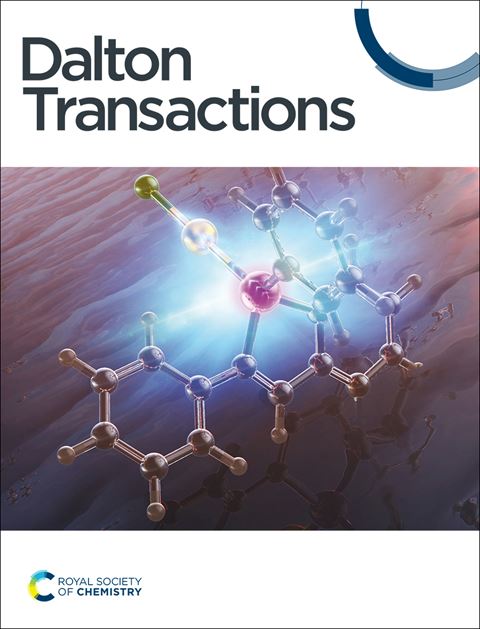由二氧化钍生成新的水合磷酸钍钠及其随后的相演化
IF 3.5
3区 化学
Q2 CHEMISTRY, INORGANIC & NUCLEAR
引用次数: 0
摘要
本研究研究了在弱酸性(pH ~ 5)到弱碱性(pH ~ 8)条件下,水热条件下纳米级二氧化钍在磷酸钠缓冲液中的行为。水热合成得到了纳米级水合双磷酸钠-钍相。介质的酸度影响产品的粒度和元素组成。在所有情况下,该相都被确定为已知的钠-钍磷酸NaTh2(PO4)3的水合变体,具有框架结构,能够在通道内容纳水和钠阳离子;值得注意的是,钠含量根据合成介质的酸度而变化。纳米相在空气中煅烧产生两种不同结晶的磷酸钠-钍混合物,NaTh2(PO4)3和Na2Th(PO4)2,以不同的比例。最终产品的组成由合成过程中使用的pH和纳米相的相关磷酸盐含量决定。通过x射线衍射、小角x射线散射、电子显微镜、x射线吸收光谱、x射线全散射和对分布函数分析、红外光谱和31P MAS NMR等一系列互补方法对煅烧前后的材料进行表征。本文章由计算机程序翻译,如有差异,请以英文原文为准。

Formation of a new hydrated sodium–thorium phosphate from thorium dioxide and its subsequent phase evolution
This study investigated the behaviour of nanoscale thorium dioxide in a sodium phosphate buffer under hydrothermal conditions under conditions ranging from weakly acidic (pH ∼ 5) to weakly basic (pH ∼ 8). The hydrothermal syntheses yielded a nanosized hydrated double sodium–thorium phosphate phase. The acidity of the medium affected particle size and elemental composition of the product. The phase, identified in all cases as a hydrated variant of the known sodium–thorium phosphate NaTh2(PO4)3, possesses a framework structure and is able to accommodate water and sodium cations within the channels; notably, the sodium content varied based on the acidity of the synthesis medium. Calcination of the nanosized phase in air produced mixtures of two distinct crystalline sodium–thorium phosphates, NaTh2(PO4)3 and Na2Th(PO4)2, in different ratios. The final product composition was determined by the pH used during synthesis and the related phosphate content of the nanosized phase. Characterization of the materials before and after calcination was carried out with a range of complementary methods: X-ray diffraction, small-angle X-ray scattering, electron microscopy, X-ray absorption spectroscopy, total X-ray scattering with pair distribution function analysis, infrared spectroscopy and 31P MAS NMR.
求助全文
通过发布文献求助,成功后即可免费获取论文全文。
去求助
来源期刊

Dalton Transactions
化学-无机化学与核化学
CiteScore
6.60
自引率
7.50%
发文量
1832
审稿时长
1.5 months
期刊介绍:
Dalton Transactions is a journal for all areas of inorganic chemistry, which encompasses the organometallic, bioinorganic and materials chemistry of the elements, with applications including synthesis, catalysis, energy conversion/storage, electrical devices and medicine. Dalton Transactions welcomes high-quality, original submissions in all of these areas and more, where the advancement of knowledge in inorganic chemistry is significant.
 求助内容:
求助内容: 应助结果提醒方式:
应助结果提醒方式:


